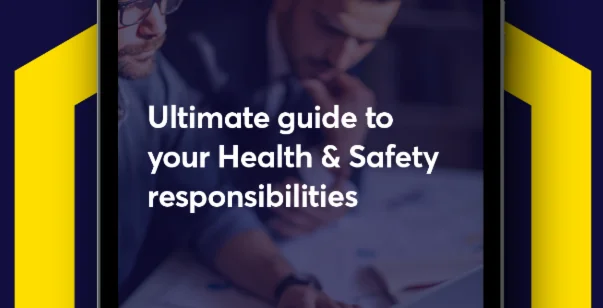Producer Responsibility
Producer responsibility is an extension of the ‘polluter pays’ principle, which was one of the 27 Principles of the Rio Declaration on Environment and Development in 1992. Producer responsibility is about ensuring businesses take responsibility for the products they place on the market at the end of their lifecycle.
The concept underlies European Directives on Packaging and Packaging Waste, Waste Electrical and Electronic Equipment (WEEE) and the Restriction of the use of Certain Hazardous Substances in Electronic and Electrical Equipment, Batteries and End of Life Vehicles (ELVs). These Directives place mandatory responsibility on producers to bear the costs of collection, sorting or treatment and recycling or recovery They seek to reduce the amount of waste going to landfill by setting targets for the re-use, recycling or recovery of certain types of products.
The Legislative Framework
With regards to packaging the Regulations fall into two categories:-
- the nature of packaging through the Packaging (Essential Requirements) Regulations
- the Producer Responsibility aspects of the users of packaging to pay for its disposal.
The European context was set by the Directive on Packaging and Packaging Waste 1994 as amended which laid out the following:
- limits to the weight and volume of packaging to a minimum in order to meet the required level of safety, hygiene and acceptability for consumers
- reductions in the content of hazardous substances and materials in the packaging material and its components
- design in reusable or recoverable packaging.
The EU Packaging Waste Directive was first transposed in the UK through the Producer Responsibility Obligations (Packaging Waste) Regulations 1997. The substantive regulations for producer responsibility obligations are the 2007 Producer Responsibility Obligations (Packaging Waste) Regulations, which cover recycling and recovery.
The Producer Responsibility Obligations
The Producer Responsibility Obligations apply to ‘Obligated Producers’ defined as those companies that:-
- handle 50 tonnes or more of packaging materials or packaging in the previous calendar year
- have a turnover more than £2 million a year (based on the last financial year’s accounts).
It is important to note that the obligations apply to the total amount of packaging handled, not the amount of packaging waste produced.
‘Handling’ means you:
- carry out one or more of: raw material manufacture, packaging conversion, packing/filling, selling, importing or service provision of lending or hiring packaging or have these activities carried out on your behalf
- own the packaging on which the activities are carried out
- supply packaging or packaging materials at any stage in the chain or to the final user of the packaging.
If you are obligated, you must either register direct with the Environment Agency or through a compliance scheme.
Packaging Recovery Notes (PRNs)
This is the evidence required by producers of packaging waste to comply with the Producer Responsibility (Packaging Waste) Regulations 2007 in the UK. Packaging producers and handlers are obligated to purchase a number of PRNs every year based on the type of their business and the amount of packaging they handle. This is referred to as the businesses PRN obligation. The PRN market is an open market allowing PRNs to be traded between accredited reprocessors and obligated companies that have a packaging obligation with trading taking place between 1st December the previous year and the 31st January the following year. As with any open market the cost of compliance will vary throughout the year driven by the fluctuating price of PRNs.
In order to comply, a business must calculate their PRN obligation (packaging obligation) for the current compliance year in each specific material. PRNs are material specific and businesses need only purchase PRNs to cover material that they have performed activity on.
The Essential Requirements Regulations
The Packaging (Essential Requirements) Regulations 2015 (‘the Regulations’) consolidates and revokes all earlier Regulations and lays down two key requirements:
Essential Requirements
- Packaging volume and weight must be the minimum amount to maintain necessary levels of safety, hygiene and acceptance for the packed product and for the consumer.
- Packaging must be manufactured so as to permit reuse or recovery in accordance with specific requirements.
- Noxious or hazardous substances in packaging must be minimised in emissions, ash or leachate from incineration or landfill.
Heavy Metal Limits
The aggregate heavy metal limits apply to cadmium, mercury, lead and hexavalent chromium in packaging or packaging components and require that the total by weight of such metals should not exceed 100 ppm (subject to some exemptions).
The Regulations are policed by Trading Standards officers in England, Wales and Scotland, in Northern Ireland by the Department of Enterprise, Trade and Investment. Enforcers are able to prosecute any company that over-packages their goods, taking account of normal storage, handling and selling requirements. The Regulations DO NOT apply to retailers unless that retailer is selling under own brand, has imported the goods in packaging or has packaged the goods themselves.
There have been very few prosecutions under these Regulations although it is understood that many companies have been approached by Trading Standards about over-packaging and have withdrawn the item or repackaged it before action was taken.
The Department for Business, Innovation and Skills (BIS) updated their guidance on the Regulations in October 2015.
Fines and Penalties
Failure to comply with the essential requirements can be penalised by a fine of up to £5000 (level 5).
Regulators can tackle environmental offences in ways without going to court for example through civil (or non-criminal) sanctions, depending on the circumstances of the offence. These include:
- fixed penalty fines for minor offences
- higher fines for more serious offences
- an enforcement undertaking: an offer, formally accepted by the environment regulator, that redresses the impact of non-compliance.
It is advised to keep evidence that packaging complies with the current regulations. All documents should be kept for at least four years and any information that is asked for should be supplied within 28 days. Documents that should be kept are:
- existing technical documents on design and use
- existing quality assurance documents
- environment management systems and auditing documents
- any documents relating to other packaging standards.
Data Provision
Data has to be provided on an annual basis to the environmental regulator. The data relates to the supply chain and is divided into four activities:
- The Raw Material Manufacturer that produces the material that packaging is made from eg a paper mill producing corrugated cardboard.
- The Convertor that turns the material into packaging eg a cardboard box manufacturer.
- The Pack-filler that places products into packaging eg a food manufacturer.
- The Seller who passes the packaged product onto the end user who then discards that packaging eg a supermarket.
These activities share 100% of the responsibility for the packaging. The Raw Material Manufacturer takes 6%, the Convertor takes 9%, the Pack-filler takes 37% and the Seller takes 48%.





